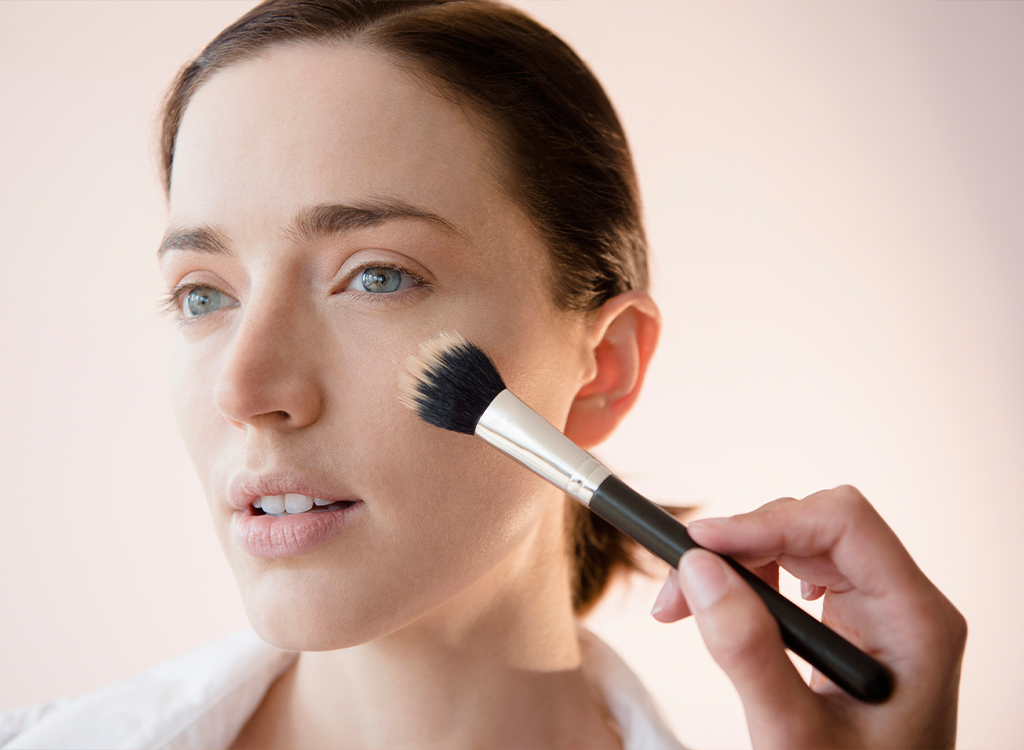Liquid foundations may be the most popular formula on the market today, but cream-based stick foundations are one of the oldest forms of the complexion staple, and a makeup artist favorite. As more new launches in this category continue to hit the makeup scene, we want to make sure we know the proper way to apply them—it’s not always as easy as “swipe and go.” Here’s what four top makeup artists have to say.
How do stick foundation formulas differ from liquids?
According to celebrity makeup artist D’Andre Michael, stick foundation formulas are simply cake foundations packaged into cylinder tubes. “They’re thicker than liquid foundation, so they’re perfect for those seeking to achieve medium-to-full coverage.” Liquids are more fluid and can be blended and buffed to look more sheer for those who want less coverage. “They’re also a bit more hydrating and are better for those with dry skin,” says Mally Roncal, makeup artist and founder of Mally Beauty. “Stick foundations are best for normal-to-combination skin. I love them because they’re travel-friendly, they have buildable coverage that is easy to blend, and they’re versatile, which busy moms like me can appreciate.”
What is the best way to apply a stick foundation?
“First and foremost, one should only apply a foundation stick to the areas where they need it,” says Roncal. “Oftentimes people think they need to apply their foundation completely all over their face, like wall-to-wall carpeting, but this is not actually the case! I would suggest to only apply stick foundations to the areas of the face that need that extra coverage, and they’re great because you can always build up the product.”
For lighter coverage, celebrity makeup artist Jamie Greenberg recommends dipping a brush—she likes the Pinnacle Foundation Brush from Anisa ($30)—onto the stick foundation—her “absolute favorite” is Younique Touch Stick Foundation ($42)—and then brushing it onto the face. “Start toward the middle of the face and work your way up and out,” says Roncal.
Marc Reagan, global director of education, artistry and events for Hourglass Cosmetics, swears by Hourglass’s Vanish Foundation Stick ($46), and says the easiest way to apply it is to dot it on your skin straight from the tube (Greenberg says this technique is typically best for medium-to-heavy coverage). “Focus on where you need it, and then blend it in with a dense brush, like our Vanish Seamless Finish Foundation Brush ($46), using circular motions,” he explains. “The right brush will distribute the product evenly and effortlessly while hiding imperfections and creating an even finish. If you need more coverage, dot more product on and blend that layer in with the same brush.” Another good brush option is Michael’s personal favorite: Sephora Collection PRO Foundation Brush #55 ($30).
However, there are always hygiene concerns when applying a product from the tube directly to the skin, especially if your skin isn’t clean. “In my expert opinion, stick foundations have the ability to collect bacteria if they’re applied directly to the skin, so I advise using a clean makeup brush to dab onto the stick foundation, and then apply to the skin and blend,” says Michael. Many makeup pros are also a fan of using a beautyblender ($20)—Michael and Greenberg included—to blend stick foundation into the skin, and it can be especially helpful when you’ve used too much product and also want to remove a little without messing up your look.
Can you also use stick foundation as concealer and a contour product?
Absolutely. “They can also double as concealer and work well to target specific imperfections because of their thicker consistency,” says Roncal, whose Mally Beauty line offers a two-in-one Quick Fix Foundation & Concealer Stick ($30). Greenberg always tells people to get three colors of their favorite stick foundation: light, medium and dark for their personal skin tone. “That way you can contour with the darkest shade, as well as change the shade if you need, depending on your coloring during the seasons,” she explains. If you’re using a foundation stick as concealer, go for the lightest of the three shades. Reagan also recommends switching your brush to a concealer brush, which will let you stipple the product over the target area to more precisely cover it.
Do you choose your shade the same way you would liquid if sticks are more concentrated?
Roncal says the shade-matching process can be more literal with stick foundations because they’re thicker and less flexible. “To pick the right shade for your skin tone, I always suggest matching your stick foundation shade to your collarbone, not your face. This technique makes sure that your face, neck and body will all be the same shade.”

















